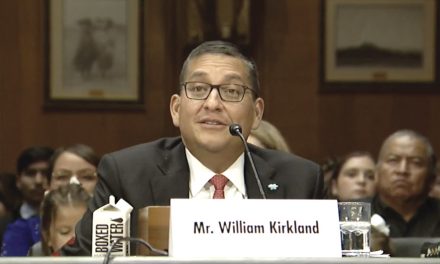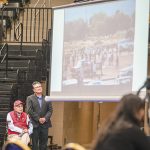
50 Years Ago: Mitchell announces he’s stepping down
Ted Mitchell, the controversial head of DNA-Peoples Legal Services, the federal legal aid agency on the Navajo Reservation, announced this week that he was stepping down as director on Feb. 28, bringing joy to a number of tribal officials who have been trying for more than a year to get him removed.
But their joy was probably tempered by the fact that he was not leaving DNA but only the directorship. He said he planned to stay on as a staff attorney.
“The cases I am handling are making increasingly more demands on my time,” he said, leaving him little time to take care of administrative duties.
The immediate reaction of high ranking officials of the tribe was “it’s about time.”
Navajo Tribal Chairman Raymond Nakai said turning over the directorship of the agency to someone who had a better understanding of the Navajo way of life will resolve most of the conflicts that had plagued the agency over the past three years.
Howard Gorman, the delegate from Ganado who had supported Mitchell in his fights with the Council and Nakai, said he was happy the controversy over Mitchell could end.
As for another Council delegate, Annie Wauneka of Wide Ruins and Klagetoh, she had no immediate comment.
It was Wauneka who started the controversy when she slapped Mitchell in his face during a Council meeting, saying she had heard him laugh at her while she was giving a speech to the Council. Mitchell said later he was laughing at something another attorney had said.
Regardless of who was right, the slap got Mitchell kicked off the reservation by the Council, forcing him to move into a trailer in Tse Bonito for several months until a federal court judge ruled the Council violated the Indian Civil Rights Act by failing to give Mitchell due process.
Mitchell told the reporter for the Navajo Times that it would be up to the agency’s board of directors to decide who would replace him but he was expecting it to be a Navajo. Since there were no Navajos with experience as a lawyer, he said he expected it would be a Navajo who had no law degree but was good in management.
“There are several well qualified Navajos out there who would be right for the job,” he said, adding that he could name some people on the DNA staff who would be capable of handling the job.
When asked if his decision had anything to do with his fight with Nakai and the Council, he said, “Absolutely not.”
At the time, DNA had a budget of about $1.1 million with about 100 employees working out of the headquarters and four branch offices.
The expectation was that the board would chose one of the three Navajos who served in high positions in the agency: Peterson Zah, the agency’s deputy administrator; Leo Haven, director of education or Louis Denetsone, administrative assistant.
In other news, a front page article in the Times this week seemed to suggest that the president of the United States, Richard Nixon, has accepted a suggestion by Nakai to create a program to help tribes bring economic development to their reservations.
At a Council meeting last week, Nakai said what the tribe needed in order to create more jobs was for the federal government to set up a fund that the tribe could capital to bring the economic development proposals to life.
Five days later, Nixon announced he had set aside $5 million for use by tribes for seed money to get economic development programs underway.
The way the Times started the article was: “The Nixon administration, apparently following a suggestion made last week by Nakai, announced …”
So did Nakai have the ear of the president or was this just a coincidence? A little of both, apparently.
A couple of months before, Nakai attended a conference in Washington, D.C. on economic development issues and one of the speakers was Spiro Agnew, the vice president of the United States.
During a question-and-answer session, Nakai apparently mentioned in passing the need for tribes to have a fund to go to for projects. Asked how big a fund was needed, he came up with a figure of $100 million.
Agnew then mentioned this to Nixon who thought it was a great idea and instructed him to find the money to make it happen. So, to give Nakai his due, he deserved a lot of credit for making the program happen.
While he didn’t get the full $100 million and he would have to compete with other tribes for the funds, Nakai was reportedly very happy that his idea became a reality. And in fact, the program would received more than $50 million in funding over the next four years with Navajos getting several million to fund a variety of economic development projects.
And finally, Nakai issued a memo to all tribal departments to cooperate with federal census officials when they come in April to do the census count.
The federal government lists the Navajo population as somewhere between 126,000 and 130,000, but tribal officials say they feel the actual number may be closer to 150,000 since past counts have missed thousands who live in remote areas.
Nakai said another problem has been the refusal of many Navajo families to cooperate in previous counts because of a belief that the census was being used as a way to find out how many sheep Navajo families had in preparation for another sheep reduction program.
This year, the tribe planned to use chapter officials to get the word out to cooperate because a higher count could mean more federal dollars.








 Highway 264,
Highway 264, I-40, WB @ Winslow
I-40, WB @ Winslow